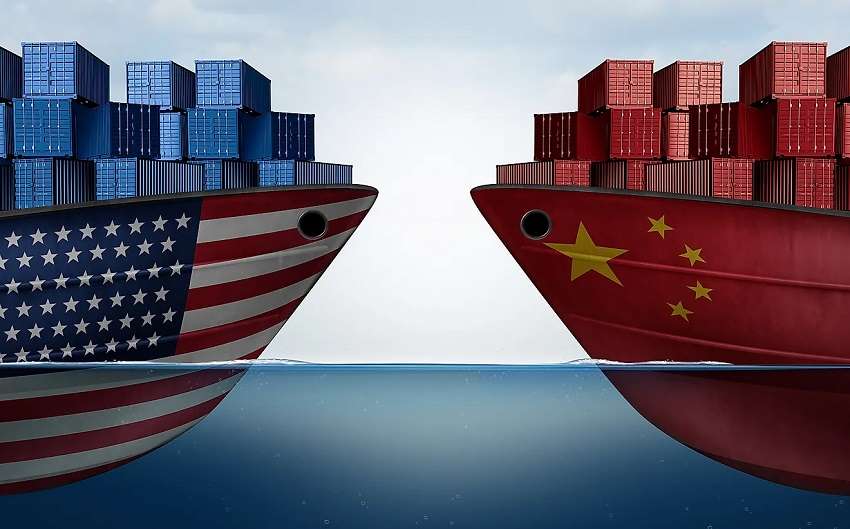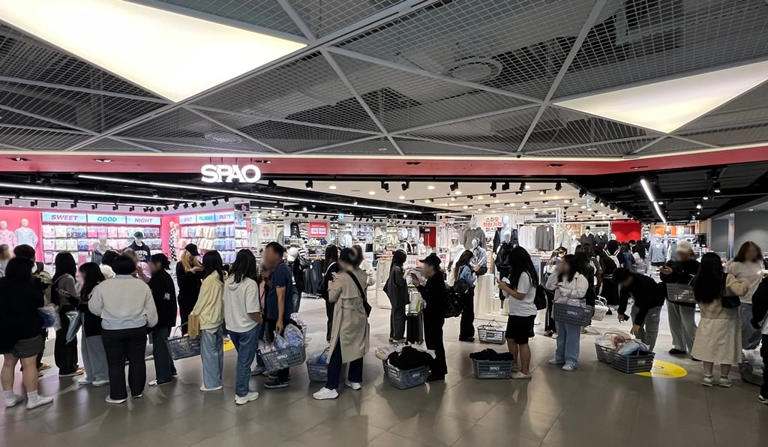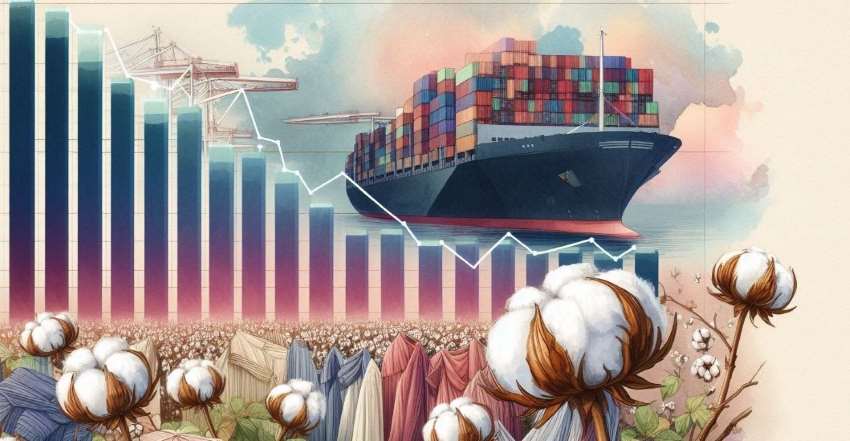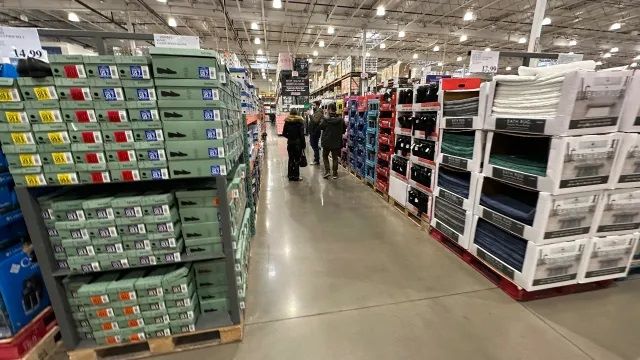FW
On April 15, Euratex (European Apparel and Textile Confederation) and FTTH (Federation Tunisienne du Textile et de l’Habillement) signed a Memorandum of Understanding (MoU) in Monastir, Tunisia, ushering in a new phase of Euro-Mediterranean collaboration in the textile and apparel sector. The agreement aims to strengthen industrial cooperation with a focus on sustainability, investment, and trade under the revised Pan-Euro-Mediterranean Convention.
The MoU was signed at the Monastir Technopole in the presence of the Governor of Monastir, the Tunisian Minister of Industry, the EU Ambassador to Tunisia, and key business leaders from both regions. The signing represents a milestone in establishing structured dialogue and concrete cooperation between the two industries at a time when global supply chains are shifting and demand for sustainable production is rising.
“Europe and Tunisia share a long-standing partnership. While our systems may differ, our industries are deeply complementary,” said Euratex President Mario Jorge Machado. “In a time of regulatory transformation and growing environmental ambitions, working together is essential. This MoU offers a practical framework to boost competitiveness, drive innovation, and reinforce our shared textile ecosystem.”
The agreement underlines a broader effort to revitalise industrial partnerships across the Mediterranean by building regional value chains, encouraging nearshoring, and reducing reliance on distant suppliers. Tunisia is viewed as a strategic, trusted partner due to its geographic proximity and established manufacturing capabilities.
Tunisia’s textile and apparel industry plays a crucial role in the national economy, employing over 160,000 workers across more than 1,600 companies. In 2024, the country exported €2.5 billion worth of textiles and garments to the European Union, highlighting its importance as a nearshoring hub for European brands.
The MoU supports Tunisia’s vision to develop into a competitive, circular, and modern textile hub. By fostering joint investment and innovation, the agreement aims to build a resilient, sustainable Euro-Mediterranean supply chain that benefits both regions.
Agriculture experts in Pakistan have advised cotton farmers to complete the cultivation of genetically modified (GM) varieties, known as BT cotton, during the current month of April.
A spokesperson for the Agriculture Extension Department stated, a vital crop for Pakistan, cotton plays a key role in boosting the national economy through increased textile exports.
This encourages the government to focus on expanding the area dedicated to cotton cultivation. In this regard, the agriculture department has granted special incentives to cotton growers, along with the distribution of agricultural equipment, he added.
Noting the release of official recommendations for cultivation of approved BT cotton varieties in addition to specifying the optimal planting window, the spokesperson advised farmers to finish planting cotton within April, as it is the prime time for achieving a bumper harvest of this crop.
He also recommended that growers cultivate approved BT varieties, including IUB-13, CKC-1, CKC-3, Hatf-3, Saim032, Saim-102, IUB-222, BS-20, MNH-1020, NIAB 545, CIM-663, NIAB-878, NIAB-1048, FH-490, IR-NIBGE-II, and BS-15. For non-BT varieties, NIAB-Kiran has been recommended by the experts, he added.
Further, the spokesperson emphasized the necessity of reserving at least 10 per cent of the cultivated area for non-BT cotton varieties to prevent the development of pest resistance in harmful insects, particularly against BT cotton.
He advised farmers to select both BT and non-BT cotton varieties based on local soil type, water availability, and guidance from local agricultural extension agents.
He stated, for optimal results, the agriculture department recommended planting on raised beds, either using mechanical methods or manual placement after forming the ridges.
Bodice, the contemporary Indian fashion label led by Ruchika Sachdeva, marked a powerful return to the runway with a showcase of its latest collection at the brand’s flagship store in New Delhi. Rooted in themes of transformation and evolving identity, the collection is the result of a unique collaboration with Bemberg, the regenerated cellulose fiber brand by Asahi Kasei Corporation, Japan.
The collection is a reflection of Sachdeva’s personal and creative journey, expressed through thoughtfully crafted garments made with fabrics woven from Bemberg yarn. Produced in Surat and Varanasi India’s renowned textile hubs the textiles celebrate India’s artisan heritage while reinforcing a forward-thinking design approach. Highlighting Bodice’s commitment to sustainability, the collection merges innovation and intuition, both in its choice of materials and in its form.
The collaboration between Bodice and Bemberg was born out of a cross-cultural dialogue that began in November last year. Asahi Kasei invited Sachdeva to Japan, where she visited Kyoto and Nobeoka in Miyazaki Prefecture home to Bemberg’s manufacturing plant. This immersive journey offered a firsthand experience of Japan’s meticulous craftsmanship and Bemberg’s legacy of responsible textile production since 1931.
Following this, the Bodice team explored Indian textile markets in Surat and Varanasi to hand-select fabrics made from Bemberg fiber. The result is a collection that combines the Japanese reverence for precision with Indian artisanal flair, echoing a balance between heritage and contemporary design.
A strong element of the new collection is upcycling particularly in the form of colour-blocking with repurposed fabric scraps, reimagined into dynamic, structured silhouettes. The brand’s signature brush-printing technique, developed in collaboration with block-printing artisans from Jaipur, lends additional depth and texture to the garments.
“The idea was to create a collection that mirrors my own journey of evolving as a designer and as a person,” said Ruchika Sachdeva. “Japan has always been an inspiration, and this collaboration with Bemberg allowed me to translate that admiration into something tangible. Fashion today is more than visual impact it’s about intention, material, and narrative.”
Takeshi Iitaka, General Manager of the Bemberg Division at Asahi Kasei Corporation, added, “Bemberg has long embraced environmental coexistence, and this collaboration aligns with our philosophy of responsible innovation. We’re proud to partner with Bodice in this cultural and creative exchange.”
Set in a lush spring landscape and complemented by an ambient soundscape, the presentation emphasized movement, form, and introspection. More than a runway show, it was an experience a harmonious blend of cultures and a powerful dialogue between tradition and transformation.
Bangladesh-based National Board of Revenue (NBR) has deferred yarn imports from India through land ports. The Board has also cancelled previous import permissions at the Benapole, Bhomra, Sonamasjid, Banglabandha, and Burimari land ports.
This new NBR order changes one issued on August 27, 2024. These land ports were the main entry points for yarn imported from India.
Earlier this year, in February, the Bangladesh Textile Mills Association (BTMA) had called for a ban on yarn imports from India through land ports.
In March 2025, a part of the Ministry of Commerce, Bangladesh Trade and Tariff Commission advised the NBR to stop yarn imports through land ports.
In its recommendation to the Abdur Rahman Khan, Chairman, NBR, the tariff commission recommended continuing yarn imports through seaports until all land and rail routes, land ports, and nearby customs offices are equipped with the required infrastructure to accurately determine yarn count according to international standards. This would protect the domestic textile industry.
Following this advice, Khan issued the directive. However, yarn can still be imported by sea or through other non-land routes.
Reports indicate, yarn manufactured in North and South India and stored in Kolkata warehouses is being sold in Bangladesh at lower prices, giving it an advantage over domestically produced yarn. This is hurting the domestic textile industry significantly, states BTMA.
Sources further indicate, while yarn prices from China, Turkey, Uzbekistan, and Bangladesh are similar, Indian yarn imported through land ports is much cheaper. Prices of yarn imported through land ports are far lower than the prices declared at the Chattogram customs house. This makes it difficult for domestic yarn manufacturers to compete.
The Arab Fashion Council (AFC) has launched a novel initiative to foster emerging fashion brands from the Arab nations. Titled, AFC Fashion Fund, this initiative will inject $500,000 into the business of a single selected designer every two years, offering sustained support aimed at scaling and expanding their brand on a global level.
Differing from conventional awards or one-time financial grants, the AFC Fashion Fund operates as a four-season accelerator program. Its goal is to transform a Ready-to-Wear (RTW) designer into a globally recognized name within the fashion industry. The chosen designer will benefit from comprehensive support across three runway seasons, gain showroom representation in Paris, and have dedicated capsule collections developed specifically for the Middle Eastern retail calendar.
The fund provides an all-encompassing brand-building experience. This includes full runway production support – covering casting, styling, public relations, content creation, and social media amplification – as well as introductions to key buyers and access to showrooms aligning with the Resort and Pre-Fall schedules.
To boost the presence of regional market, the program incorporates support for capsule collections timed around significant cultural events such as Ramadan and Eid. Additionally, the selected designer will gain access to major retail networks within the Gulf Cooperation Council (GCC) and receive tailored e-commerce strategies designed to enhance direct-to-consumer sales.
With a selection process that identifies only one designer every two years, the AFC Fashion Fund ensures a focused and in-depth level of support. This includes valuable industry mentorship, strategic market access, and significant global exposure to propel the designer's brand forward.

The announcement of reciprocal tariffs by the US, even with the 90-day pause on those excluding China, has triggered a significant restructuring of global textile supply chains. This sector, characterized by its intricate and geographically dispersed production networks, is highly sensitive to trade policy shifts. Important players like China, India, Turkey, and Indonesia are adapting their strategies to navigate this evolving landscape.
China repositions exports
While facing challenges in exporting finished textiles to the US, China is repositioning its raw material exports. It’s increasing exports to Southeast Asia. Countries like Vietnam, Bangladesh, and Cambodia are rapidly increasing their garment manufacturing industries. And they rely heavily on imported raw materials, particularly yarns and fabrics, from China. In fact, Vietnam's textile and apparel exports to the US have been steadily increasing. A significant portion of the raw materials used in this production comes from China. Data indicates a substantial rise in Chinese textile raw material exports to Vietnam in recent years, a trend likely to accelerate. Therefore, China is increasing its raw material exports to these countries to support their growing manufacturing sectors. This allows China to maintain its position in the supply chain, albeit at an earlier stage. Also, China will seek to increase raw material trade with African countries, where textile manufacturing is increasing, through heavy investment.
China is also actively looking to expand its raw material exports to other major markets such as the European Union and countries participating in the Regional Comprehensive Economic Partnership (RCEP). Mexico is also a key target, due to its proximity to the US
Table: Projected shift in China's raw material exports
|
Destination |
Current export share (estimated) |
Projected increase |
Reasons |
|
Southeast Asia (Vietnam, Bangladesh, Cambodia) |
35% |
15-20% |
Growing manufacturing, lower labor costs |
|
RCEP Countries |
20% |
10-15% |
Trade agreements, market diversification |
|
African Countries |
10% |
5-10% |
Increasing manufacturing capacity |
|
European Union |
15% |
5% |
Diversification of Markets. |
|
Mexico |
5% |
10-15% |
proximity to the US. |
India's export opportunities
India is expected to capitalize on the shifting landscape by increasing its raw material exports especially to the European Union and the Middle East. India has a strong base in cotton yarn and fabric production. It can increase exports to the EU, which seeks to diversify its sourcing away from China. The Middle East, particularly countries like the UAE and Saudi Arabia, are also growing markets for Indian textiles.
Table: Projected growth in India's raw material exports
|
Destination |
Current export share (estimated) |
Projected increase |
Reasons |
|
European Union |
20% |
10-15% |
Diversification of sourcing, competitive pricing |
|
Middle East |
15% |
8-12% |
Growing markets, proximity |
|
Mexico/South America |
10% |
5-10% |
Increased manufacturing for US supply. |
|
Southeast Asia |
20% |
3-5% |
Diversification of export markets. |
India can also increase trade with countries benefiting from US diversification. For example, countries such as Mexico, and certain South American nations that are increasing their textile production to supply the US, will increase their demand for Indian raw materials. Southeast Asian countries too are looking to diversify their raw material imports, away from solely relying on China. For example, as Bangladesh looks to diversify its raw material imports, India is a close and logical trade partner. India's proximity, and strong cotton production, gives it a competitive edge in supplying Bangladesh.
Turkey's and Indonesia's supply chain adjustments
Both Turkey and Indonesia will see an increase in demand for their products from countries looking to diversify their supply chains away from China. And both countries will need to invest in infrastructure and technology to meet the increasing demand.
Turkey's strength lies in its vertically integrated textile industry, from raw materials to finished goods. With tariff imposition, Turkey will focus on increasing its exports of higher value-added fabrics and yarns to the EU and the US. They will also seek to strengthen regional supply chains, sourcing raw materials from neighboring countries. Turkey will also see an increase in demand from European retailers that are looking to reduce reliance on the Far East.
Indonesia meanwhile will focus on attracting foreign investment to improve its manufacturing efficiency and increase its production of yarns and fabrics. They will seek to increase exports to countries in Southeast Asia and the Middle East. Indonesia will also attempt to increase its exports to countries that have free trade agreements with the US. And will focus on capturing the middle market of textiles, as companies move away from China, and look for low cost alternatives. Data shows, FDI in Indonesia's textile sector has been increasing, reflecting growing interest in its manufacturing potential.
Table: Supply chain shifts for Turkey and Indonesia
|
Country |
Focus area |
Export markets |
Supply chain adjustment |
|
Turkey |
Higher value-added fabrics, yarns |
EU, U.S., Regional markets |
Strengthening regional supply chains, increased investment in technology |
|
Indonesia |
Yarns, fabrics, attracting foreign investment |
Southeast Asia, Middle East, Countries with free trade agreements with the USA. |
Improving manufacturing efficiency, infrastructure development |
|
Turkey's textile export growth to EU (in $ bn) |
|||
|
Year |
Export value |
Growth rate |
|
|
2021 |
15.2 |
- |
|
|
2022 |
16.5 |
8.60% |
|
|
2023 |
17.8 |
7.90% |
|
|
Indonesia's textile sector FDI ($ mn) |
|||
|
Year |
FDI value |
Growth rate |
|
|
2021 |
450 |
- |
|
|
2022 |
500 |
11.10% |
|
|
2023 |
560 |
12% |
These tables highlight the quantitative perspective on the projected shifts. These shifts are highly dynamic and influenced by various factors, including evolving trade policies, economic conditions, and technological advancements.
Thus the 90-day hold on tariffs (excluding China) has led to but the long-term trend of supply chain diversification is likely to continue. The impact of the tariffs will vary depending on the specific textile product. Raw materials, yarns, and fabrics will be affected differently. Companies are now focusing on sustainability and ethical sourcing, which will further influence supply chain decisions.
The reciprocal tariffs are indeed triggering a significant restructuring of global textile supply chains, with countries adapting to the new trade landscape. While China's dominance may decline, countries like India, Turkey, and Indonesia are likely to gain. However, these countries need to address their respective challenges to fully capitalize on the shifting landscape.
Operator of Zara clothing and Virgin Megastore chains in the Middle East, the Azadea Group has deferred its IPO launch plans to focus on its business operations.
The group’s decision to delay the IPO listing is not influenced by the current market volatility triggered by US President Donald Trump’s tariff policies. The Beirut-based retailer plans to foray into new markets in the Middle East besides expanding into existing ones.
Trump’s tariffs announcements have led to widespread turbulence in the Gulf equity markets.
While the IPO plans of regional bankers remain largely intact, the greater uncertainty and a decline in oil prices makes new IPO listing challenging in one of the world’s busiest markets
An investment vehicle owned by the emirate’s ruler, Dubai Holding acquired a minority stake in Azadea in 2018, boosting the company’s value to over $1 billion.
Operator of over 700 stores across over a dozen countries, Azadea was founded in 1978 by the Lebanon-based Daher family.
Tummala Nageswara Rao, Minister for Handlooms and Textiles, Telengana officially opened the new TexPort unit at the Apparel Park in Sircilla, emphasizing on the state government's dedication to supporting its weavers and farmers.
Built on 7.6 acre with a $7.4 million investment (Rs 62 crore) and covering 186,215 sq ft, this facility is expected to generate substantial job opportunities for the local community.
Other key officials attending the store’s inauguration includes IT and Industries Minister Sridhar Babu, BC Welfare and Transport Minister Ponnam Prabhakar, Government Chief Whip Aadi Srinivas, and district collector Sandeep Kumar Jha. The dignitaries unveiled a commemorative plaque, toured the production areas, and interacted with the factory workers.
During the event, Rao emphasized the state's ongoing programs such as ‘Worker to Owner’ and announced significant financial assistance measures. These include a $2.47 billion (Rs 20,600 crore) loan waiver for farmers, $4.1 million (Rs 34 crore) allocated for weavers on Konda Laxman Bapuji Jayanti, and the clearance of outstanding payments totaling $109.7 million (Rs 914 crore) for weavers. Further welfare initiatives include programs like Chenetha Bharosa (Weaver's Assurance), Chenetha Bima (Weaver's Insurance), and large textile orders valued at $108 million (Rs 900 crore) placed with local weavers.
BC Welfare Minister Ponnam Prabhakar expressed his appreciation for TexPort’s $7.4 million (Rs 62 crore) investment from Bengaluru, pledging the government’s full support for the industry’s growth and the creation of more local jobs.
Inditex's youth-focused fashion brand, Pull &Bear is strengthening its UK presence by relocating its London flagship store. As part of its international expansion, Pull & Bear has opened its new flagship at 207-213 Oxford Street, a prime retail location in London. The brand's previous store at 315-319 Oxford Street closed two months ago.
The new store spans 1,391 sq m across two floors and features a digitally enhanced, minimalist design. The aesthetic is sleek and modern, with metallic surfaces, industrial elements, and refined wood accents. Pull & Bear collaborated with street artist Navinder to incorporate exclusive, site-specific installations, adding a creative touch to the shopping experience.
The store's layout uses a modular room system to optimize product visibility, navigation, and customer flow. The store’s upgraded features include assisted self-checkout stations and a dedicated service point for online order collection and returns. The store also houses a unique ‘Pull&Bear Room’ within the fitting area to encourage customer engagement on social media platforms like TikTok.
The store is divided into dedicated sections for women's wear, men's wear, footwear, and accessories. It also includes areas for Pull & Bear's in-house women’s collection, Pacific Republic, and its urban sub-brand STWD, which features an exclusive unisex capsule collection. To celebrate the opening, Pull & Bear is previewing a limited-edition collection, set for a full launch at a future pop-up store in Milan.
This store’s opening aligns with Inditex's broader retail expansion in Europe and internationally. The retailer recently opened a new Oysho store in Paris's Place de la Madeleine and a major Zara flagship in Nanjing, China. It plans to open a new Massimo Dutti store on Oxford Street, further solidifying its presence in central London's key shopping district.
By the end of 2024, Pull&Bear had 800 stores globally, a mix of company-owned and franchised locations. The brand is also available in over 200 markets through e-commerce. In the UK, Pull&Bear now has 14 retail locations, including three in London, along with stores in cities like Cardiff and Manchester.
Founded in 1991 and headquartered in Narón, Galicia, Spain, Pull&Bear is part of the Inditex group, which also owns Massimo Dutti, Bershka, Stradivarius, Oysho, Zara, Zara Home, and Lefties.
In its 2024 fiscal year, Pull & Bear’s revenues increased by 4.6 per cent to €2.47 billion in revenue. Total consolidated revenue of Marta Ortega, Chairman-led Inditex rose by 7.5 per cent to €38.63 billion in consolidated revenue for the same period.
Emerging as India’s second-largest textile exporter for the fifth consecutive year, Gujarat exported textiles worth $5.749 billion in FY2023-24.
While Gujarat has consistently been a major player in the cotton yarn and fabric markets, the state hasn't yet reached its full potential within the global textile supply chain, suggest industry analysts However, they anticipate that the recently implemented textile regulation has the power to revolutionize the industry. The policy aims to establish Gujarat as a leading global textile hub by attracting new investments, particularly in garment manufacturing.
The policy's focus on technical textiles, integrated infrastructure, and boosting value-added production is expected to enhance Gujarat's position in the coming years. The FY 2021-2022 saw a significant rise in textile exports, largely due to rising cotton prices. Now that cotton prices have stabilized around Rs 53,500 (approximately $624.21) per candy (356 kg), manufacturers are anticipating more predictable input costs and improved long-term planning.
Pabitra Margheria, Union Minister of State for Textiles, highlighted the central government's initiatives to boost the sector's competitiveness in a response to the Lok Sabha. These include the Production-Linked Incentive (PLI) scheme targeting the technical textiles and man-made fiber (MMF) sectors, and the PM MITRA program aimed at developing world-class textile parks.
According to Rahul Shah, Co-Chairman, GCCI textile taskforce, Gujarat's growth began with the 2012 textile policy. He noted, Gujarat holds a significant advantage in exporting cotton fabric and yarn. Despite a decrease in demand in Europe due to the Russia-Ukraine war, the state still has room to grow, opines Shah. It could benefit from the global push to reduce reliance on Bangladesh and China, especially as major companies seek alternative sourcing locations following the Covid-19 pandemic, he adds.












